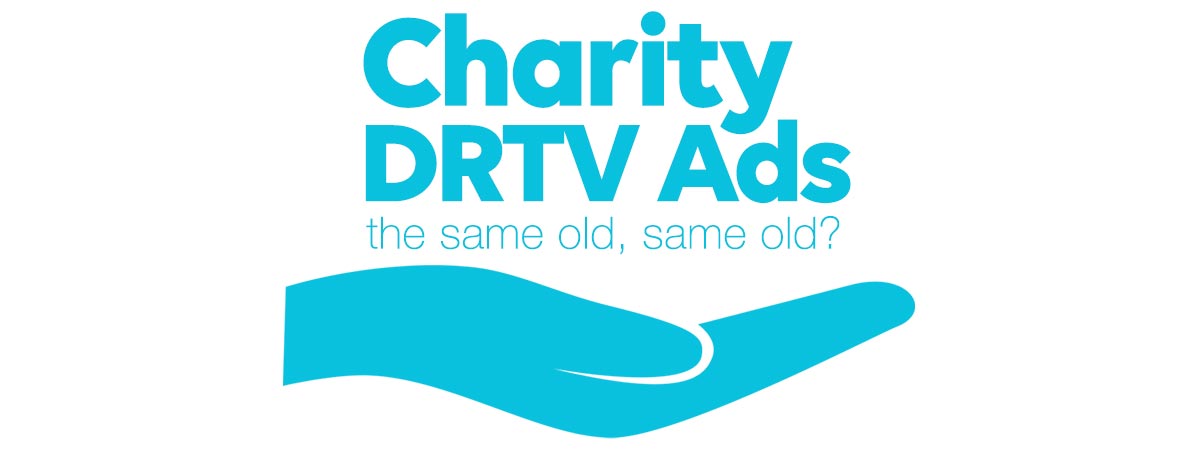Charity DRTV ads – the same old, same old?
By Mike Reynolds 05 October 2019
We looked at more than 30 different TV ad executions from varied charities. The following is a summary of our conclusions.
There seem to be well-trodden (and somewhat clichéd) routes to creating a DRTV ad in the charity space.
This has led to “message convergence” with a preponderance of unctuous voiceovers and the use of minor key music to set up the distress scenarios.
Heartstring twanging moments are the norm.
It would be easy to do the old ad trick of swopping the logos of various organisations over and not seeing a great deal of difference.
These classic execution devices will always work for a certain section of the populace, the soft givers who are easily affected by poignant shots of starving children, abandoned or mistreated animals. But it could be leaving a huge swathe of the UK populace unmoved.
Another striking aspect of the market is that most (almost all) of the ads are impersonal and do little to involve the viewer other than as a giver.
Most of the ads we reviewed used the classic DRTV technique of problem/solution, and while this is proven to work, it means that there is no new breakthrough, attention getting and purse opening techniques being used.
Compare this to other crowded DRTV sectors such as comparison websites and fintech companies where there are many differentiating approaches, from meerkats to twerking men to cheesy opera singers.
While it is true that many of these more original DRTV approaches seem to be focused on both response and brand building/ memorability (because they are not just instant response driven), there is a valid argument that Charity organisations should also build their brand identities using the power of TV.
In other words, the stimulus that creates response today should stay in the mind to continue to provoke further giving in the future.
Then when they reach their audiences through other media, from social media to classic door drops, the recipient of the messaging will already have a view about the “brand”.
Currently, for the majority of advertisers, because of message convergence, it is less likely that beyond an instant emotional response, there will be little retention of brand attributes or information about the organisation itself.
As Bob Geldof said famously: “Give us your f***king money” is the main message – which seems to be a waste of the power that TV has to build brand awareness and a broader picture of the valuable work that charity organisations carry out.
We believe that it is possible to do the former while still continuing to get the cash flowing in.
In our view there are potent areas for trial with different messaging strategy, the following ideas and concepts are starters and some may have already been considered, however we still think they are worth examining or re-examining:
Make memorable (Use creative techniques to stop people from seeing just wallpaper)
Celebration (Look what we’ve achieved, help us do more)
Positive news (Look how things have changed, help us continue the changes)
Accountability (Look how we use your money to achieve so much)
Reverse engineering (Start with the happy ending, then reveal the story that leads to it)
First person experience (We took Average viewer/target to see work being done)
Character led (the equivalent of Pudsey used in other areas)
Testimonials (Existing giver sees first hand what has been done)
Direct request (Funds asked for directly by victims - yes, even talking donkeys if that’s what it takes)
Live ads (broadcast as it happens from where help is needed)
Humour (Yes, if used as an analogy)
Short time lengths (Big impact and different – message in 10 seconds)
